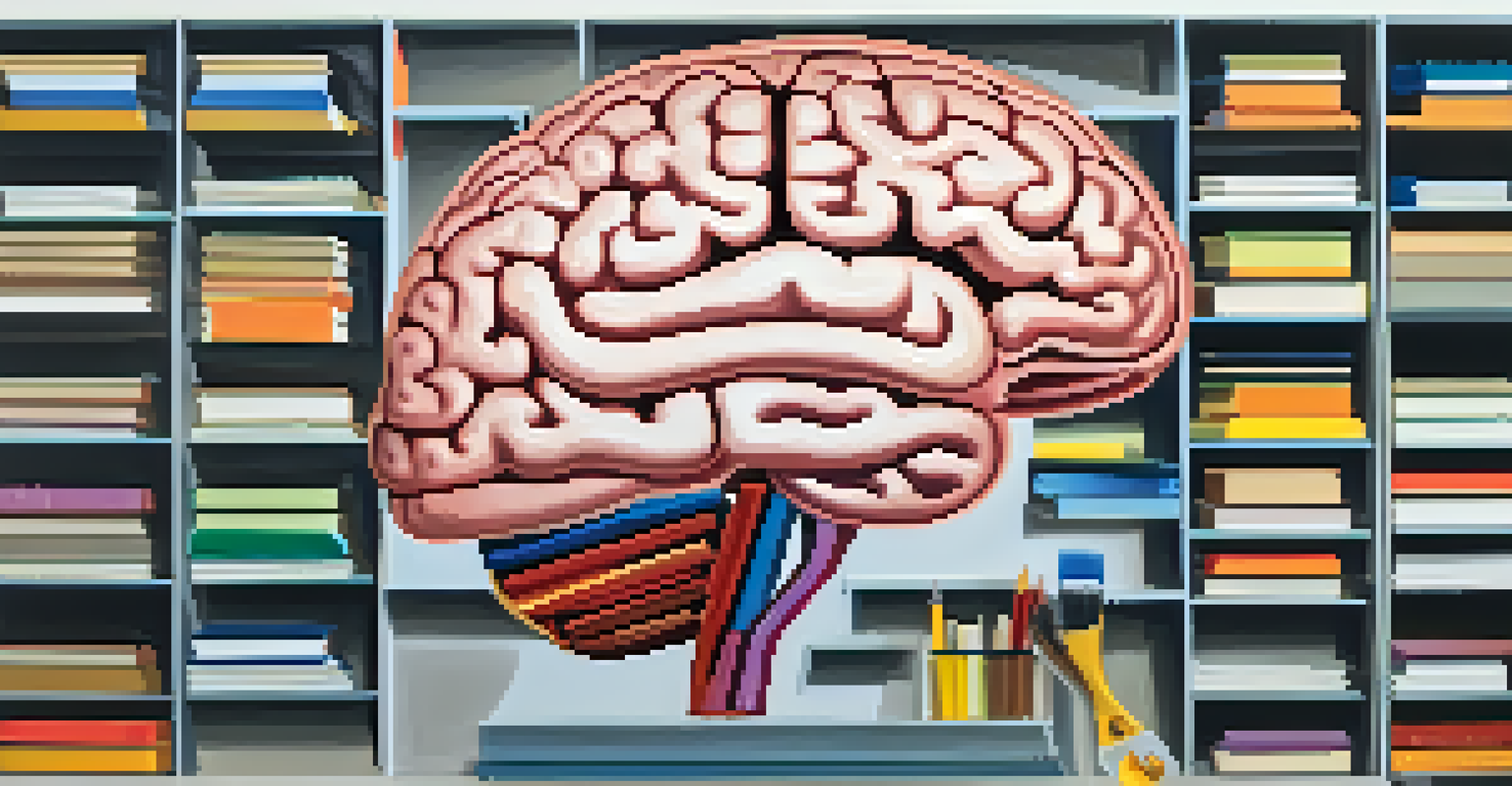The Science Behind Cognitive Load and Information Retention

What is Cognitive Load and Why It Matters
Cognitive load refers to the amount of mental effort being used in the working memory. It plays a crucial role in how we process information and learn new concepts. Understanding cognitive load can help educators and learners optimize their study habits for better retention.
The mind is everything. What you think you become.
There are three types of cognitive load: intrinsic, extraneous, and germane. Intrinsic load is related to the complexity of the material, while extraneous load refers to unnecessary distractions. Germane load, on the other hand, is the mental effort that contributes to learning and schema construction.
By managing these types of loads effectively, individuals can enhance their learning experiences. For instance, reducing extraneous load by minimizing distractions can lead to improved focus and retention.
The Role of Working Memory in Learning
Working memory is like a mental scratchpad, where we hold and manipulate information temporarily. It has limited capacity, which means that overloading it can hinder our ability to retain new information. This is where understanding cognitive load becomes vital.

When working memory is overwhelmed, it can lead to cognitive overload, making it difficult to learn effectively. For example, trying to memorize a long list of terms while also listening to a lecture can create confusion and frustration.
Understanding Cognitive Load
Cognitive load influences how we process and retain information, with three types: intrinsic, extraneous, and germane.
To combat this, breaking information into smaller chunks can help. This technique, known as chunking, allows our brains to process and store information more efficiently, making learning more manageable.
Intrinsic Load: The Complexity of Material
Intrinsic load is determined by the inherent difficulty of the material being learned. For example, understanding advanced calculus will naturally require more cognitive effort than basic arithmetic. The key here is that intrinsic load cannot be changed; it's tied to the content itself.
We learn by example and by direct experience because there are real limits to the adequacy of verbal instruction.
However, educators can tailor their teaching methods to accommodate varying intrinsic loads. This might involve scaffolding complex topics, gradually increasing difficulty, or providing foundational knowledge before diving into tougher concepts.
By adjusting the way information is presented, learners can build their understanding step by step, reducing feelings of overwhelm. This strategy makes it easier for students to engage and retain critical information.
Extraneous Load: Minimizing Distractions
Extraneous load comes from factors that are not essential to the learning process, such as poorly designed instructional materials or unnecessary details. These distractions can pull focus away from the core content, ultimately hindering retention.
For instance, a cluttered presentation with excessive animations may divert attention from the main ideas being conveyed. By streamlining content and focusing on clear visuals, learners can better absorb and understand information.
Managing Working Memory
Effective learning relies on managing working memory to avoid cognitive overload, often through techniques like chunking.
Creating an optimal learning environment is crucial. This includes reducing background noise, ensuring proper lighting, and using materials that enhance rather than detract from the learning experience.
Germane Load: The Key to Effective Learning
Germane load is the mental effort that directly contributes to learning and understanding. It involves the cognitive processes that help learners make connections and integrate new information with existing knowledge. This type of load is desirable and should be encouraged.
Techniques such as elaborative interrogation or self-explanation can enhance germane load. For instance, asking learners to explain concepts in their own words encourages deeper processing of the material, fostering better retention.
By promoting activities that increase germane load, educators can help students develop a more profound understanding of complex subjects, leading to long-term retention of information.
Strategies for Managing Cognitive Load
To effectively manage cognitive load, learners can employ several strategies. One of the most effective is the use of multimedia, which combines verbal and visual information. This approach can enhance understanding and retention by engaging multiple channels of processing.
Another strategy is spaced repetition, where information is revisited at intervals over time. This technique helps combat the forgetting curve and reinforces memory retention, making it easier to recall information when needed.
Strategies to Enhance Learning
Implementing multimedia, spaced repetition, and active learning techniques can significantly improve retention and engagement.
Lastly, active learning techniques, such as group discussions or hands-on activities, can enhance engagement and understanding. By actively participating, learners can better manage cognitive load and improve their retention of information.
The Impact of Cognitive Load on Education
Understanding cognitive load theory has profound implications for education. By recognizing how students process information, educators can design more effective learning experiences. This can lead to improved outcomes and a more enjoyable learning journey.
For example, teachers can create lesson plans that balance intrinsic, extraneous, and germane loads, ensuring that students remain engaged without feeling overwhelmed. This thoughtful approach fosters a healthier learning environment.

Ultimately, by prioritizing cognitive load management, we can enhance educational practices and empower learners to retain information more effectively. It’s about creating an ecosystem where learning can thrive.